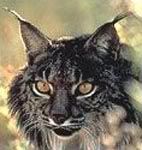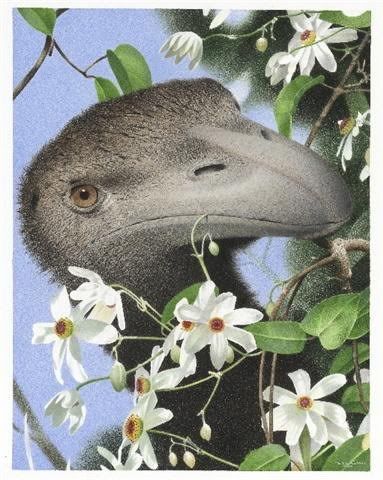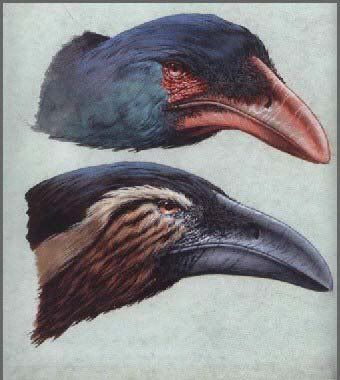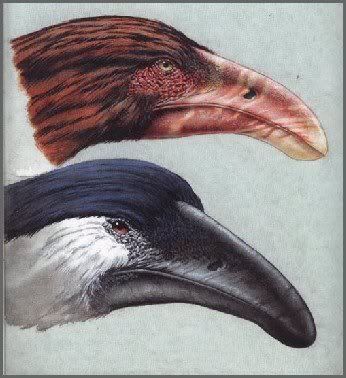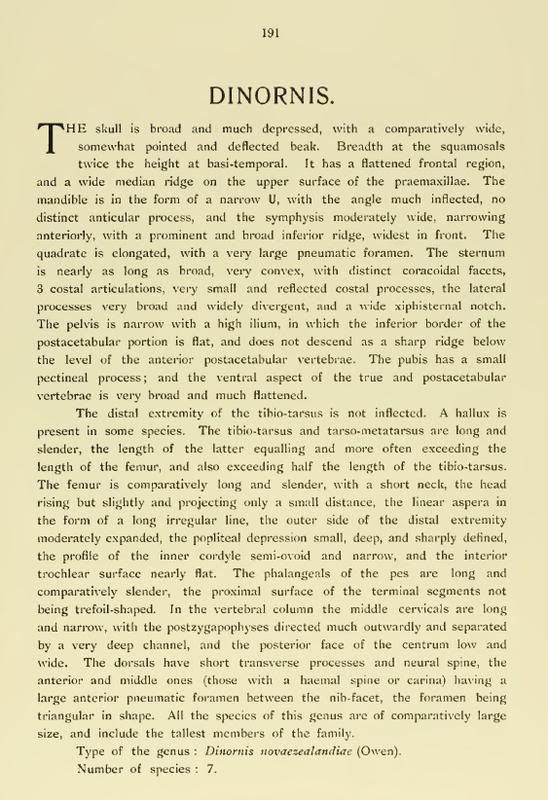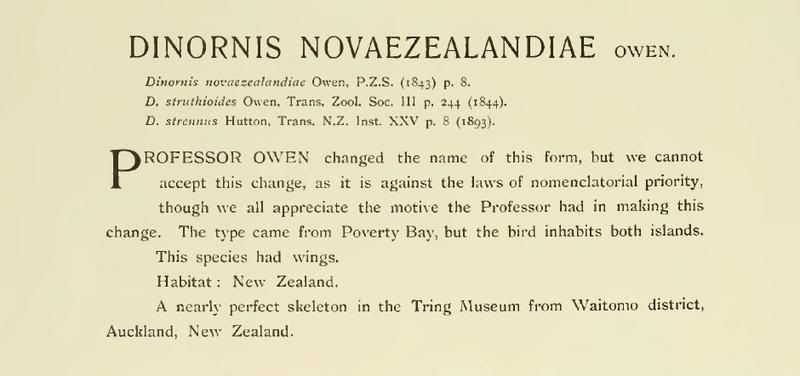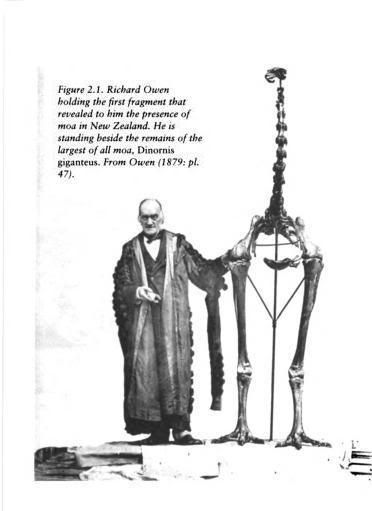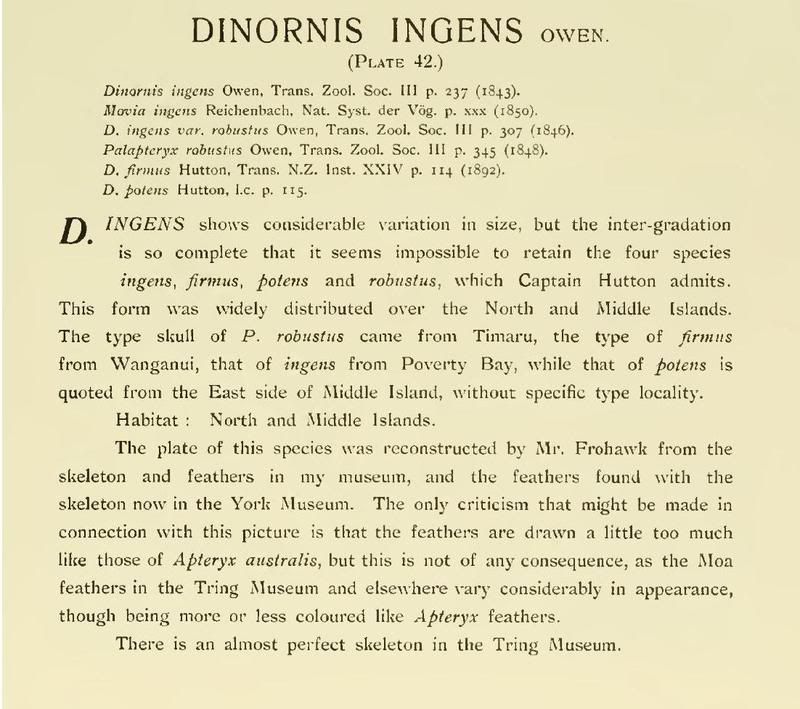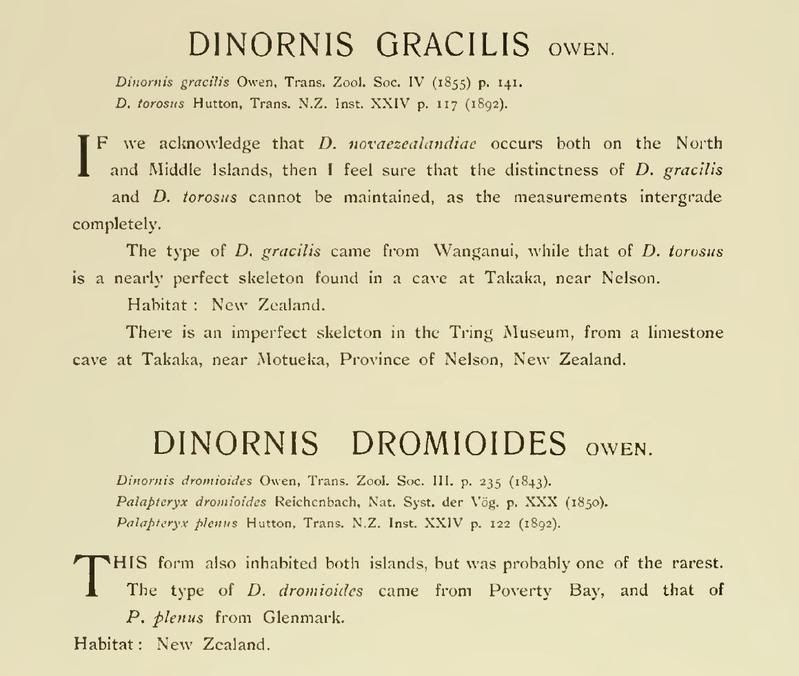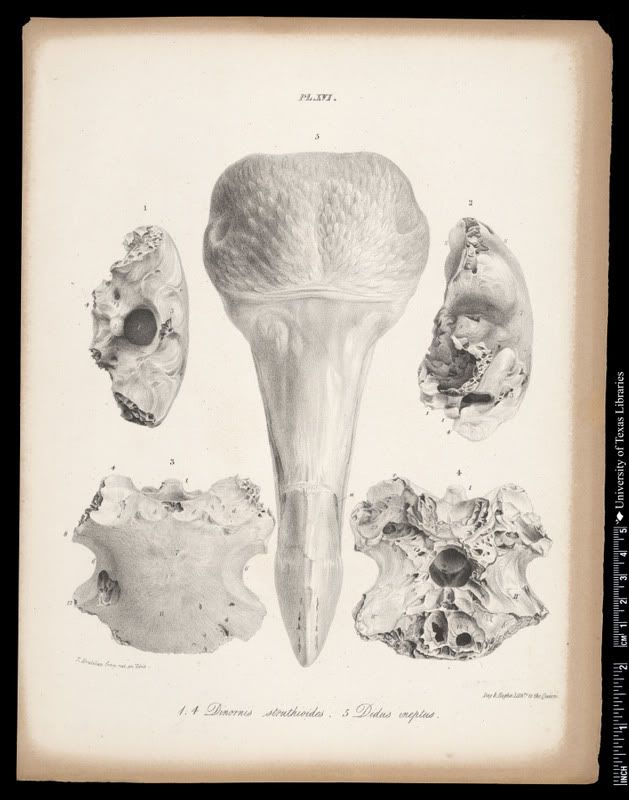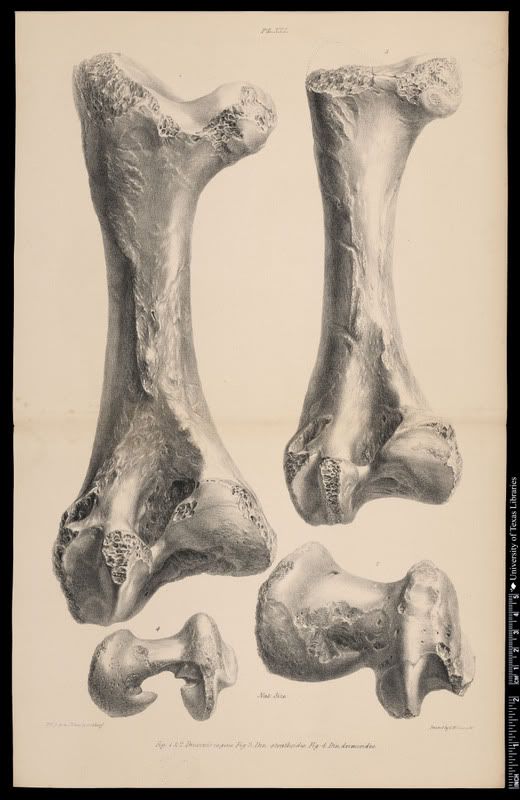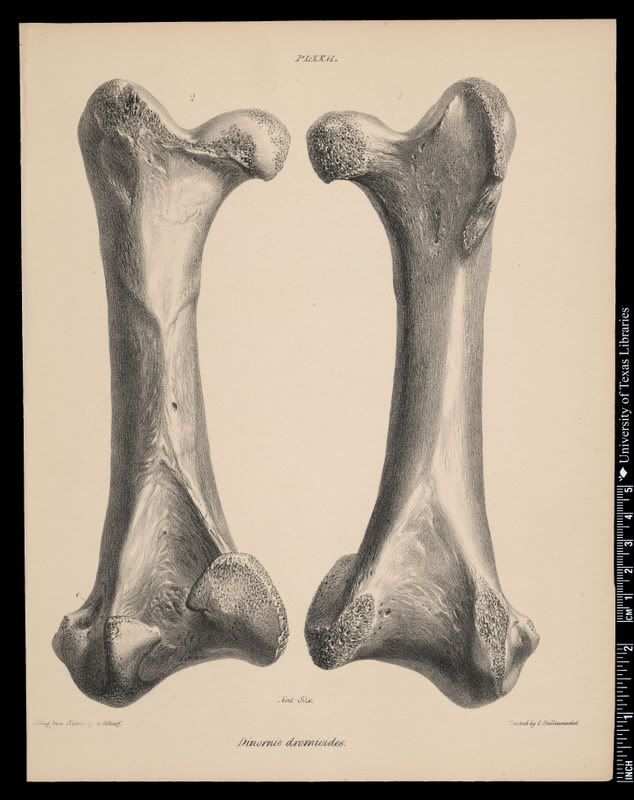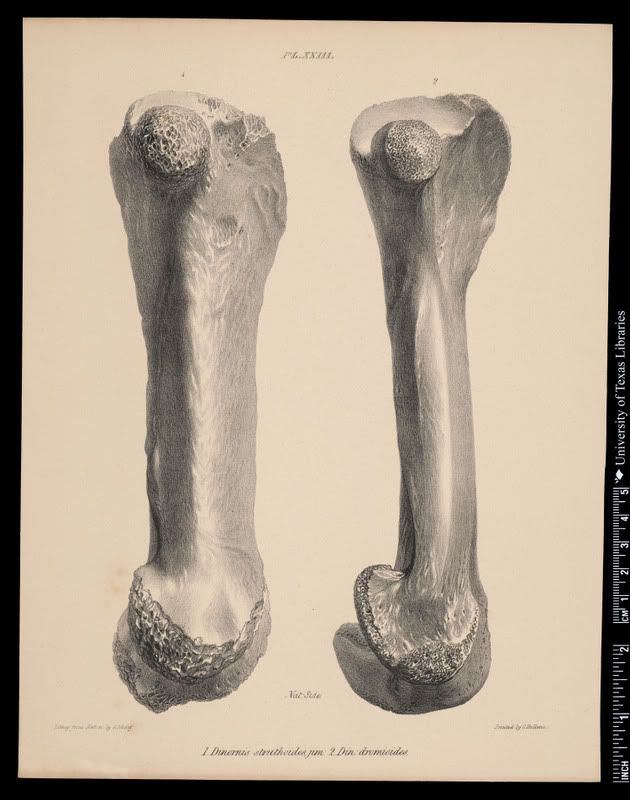Post by Melanie on Nov 8, 2005 13:26:21 GMT
Dinornis, The North and South Island Giant Moa, are the largest of the flightless birds called Moa. Like all Moa they had a small head, a broad flattened beak and small eyes, a long neck and a hefty body, supported by thick legs. They had well-developed nostrils and nasal bones, so they probably had a very good sense of smell. Moa are unique amongst flightless birds because they have lost any trace that they once had wings — not even tiny wing bones or a wishbone are left.
Dinornis giganteus lived in the North Island of New Zealand and D. robustis in the South Island.
The preserved stomach contents of the Giant Moa show that they snipped twigs off plants such as the daisy–bush, Olearia, and ate them. They also ate berries and leaves. Like many birds, they had to swallow stones to grind up the food in the gizzard. Stones polished smooth by being rubbed together in the gizzard are often found with Moa skeletons. They normally browsed on food about 2m off the ground. If they leaned back and stretched out their necks, they could pluck food as high up as 3m.
Moa only laid one or two eggs at a time. Eggshell fragments have been found at many sites, including at prehistoric Maori settlements, where they had been cooked and eaten. Dinornis giganteus eggs measured 240mm long and 178mm wide.
Very recently, two teams of scientists in New Zealand and Britain, carrying out what they call the first “molecular sexing” of an extinct species have proved that there were only two genetically distinct species of Dinornithid Moa, one on the North Island and the other on the South Island.
Professor David Lambert of Massey University and Dr Craig Millar of Auckland University and a team led by Oxford–based expatriate New Zealander Dr Alan Cooper found that all the giant Moa were actually females and have proved this by sifting through tiny scraps of DNA teased out of old Moa bones. By looking at mitochondrial DNA, the part of a cell that is descended from the maternal line, they made this extraordinary discovery.
The original designation of three species of the genus Dinornis was based on the assumption that the level of size difference detected in the genus is too large to represent a single species, the largest females were about 1.5 times the height and 2.8 times the weight of the largest males. The gender imbalance is the biggest of any species of bird or mammal found so far.
The giant Moa — now proven to be all females — were among the world’s biggest birds. They weighed between 76kg and 242kg, up to three times as much as humans, and stood 1.2 to 1.9 metres tall at the back. The males, formerly thought to have been a separate species called Dinornis struthoides, weighed only 34kg to 85kg — the size of human children or adults. They stood from 0.9 to 1.2 metres tall at the back.
Females accounted for the most Moa bones that have been preserved in swamps and deposited in museums. That suggests the females were out foraging and maybe the males were sitting on the eggs, as the male kiwi does. Dr Cooper’s group suggested that the big females were needed to produce big eggs for their young to survive in the forests.
The species Dinornis giganteus and Dinornis struthoides are now placed in the synonymy of Dinornis novaezealandiae. Leaving only a total of 10 Moa species that have lived in historic times on this planet.
Other common names: —
Dinornis struthoides, Slender Bush Moa
Dinornis novaezealandiae, Large Bush Moa
Dinornis giganteus, Giant Moa
North Island Giant Moa, South Island Giant Moa.

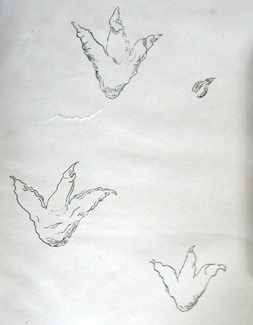
www.nzbirds.com/birds/moagiant.html
Dinornis giganteus lived in the North Island of New Zealand and D. robustis in the South Island.
The preserved stomach contents of the Giant Moa show that they snipped twigs off plants such as the daisy–bush, Olearia, and ate them. They also ate berries and leaves. Like many birds, they had to swallow stones to grind up the food in the gizzard. Stones polished smooth by being rubbed together in the gizzard are often found with Moa skeletons. They normally browsed on food about 2m off the ground. If they leaned back and stretched out their necks, they could pluck food as high up as 3m.
Moa only laid one or two eggs at a time. Eggshell fragments have been found at many sites, including at prehistoric Maori settlements, where they had been cooked and eaten. Dinornis giganteus eggs measured 240mm long and 178mm wide.
Very recently, two teams of scientists in New Zealand and Britain, carrying out what they call the first “molecular sexing” of an extinct species have proved that there were only two genetically distinct species of Dinornithid Moa, one on the North Island and the other on the South Island.
Professor David Lambert of Massey University and Dr Craig Millar of Auckland University and a team led by Oxford–based expatriate New Zealander Dr Alan Cooper found that all the giant Moa were actually females and have proved this by sifting through tiny scraps of DNA teased out of old Moa bones. By looking at mitochondrial DNA, the part of a cell that is descended from the maternal line, they made this extraordinary discovery.
The original designation of three species of the genus Dinornis was based on the assumption that the level of size difference detected in the genus is too large to represent a single species, the largest females were about 1.5 times the height and 2.8 times the weight of the largest males. The gender imbalance is the biggest of any species of bird or mammal found so far.
The giant Moa — now proven to be all females — were among the world’s biggest birds. They weighed between 76kg and 242kg, up to three times as much as humans, and stood 1.2 to 1.9 metres tall at the back. The males, formerly thought to have been a separate species called Dinornis struthoides, weighed only 34kg to 85kg — the size of human children or adults. They stood from 0.9 to 1.2 metres tall at the back.
Females accounted for the most Moa bones that have been preserved in swamps and deposited in museums. That suggests the females were out foraging and maybe the males were sitting on the eggs, as the male kiwi does. Dr Cooper’s group suggested that the big females were needed to produce big eggs for their young to survive in the forests.
The species Dinornis giganteus and Dinornis struthoides are now placed in the synonymy of Dinornis novaezealandiae. Leaving only a total of 10 Moa species that have lived in historic times on this planet.
Other common names: —
Dinornis struthoides, Slender Bush Moa
Dinornis novaezealandiae, Large Bush Moa
Dinornis giganteus, Giant Moa
North Island Giant Moa, South Island Giant Moa.


www.nzbirds.com/birds/moagiant.html








